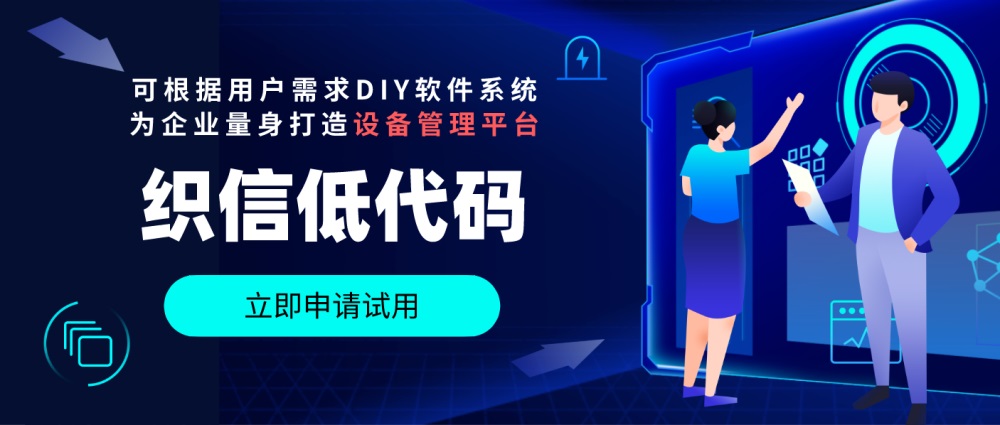启动视频设备管理软件

在启动视频设备管理软件时,你需要确保设备连接正确、安装所需驱动程序、使用兼容的软件。确保设备连接正确是启动视频设备管理软件的第一步。你需要确保所有视频设备,如摄像头和麦克风,已正确连接到计算机。这包括检查设备电缆是否紧密插入,USB端口是否正常工作,以及设备是否通电。接下来,安装所需的驱动程序非常重要。大多数视频设备都需要特定的驱动程序才能与计算机正确通信。你可以从设备制造商的官方网站下载并安装最新的驱动程序。此外,选择兼容的软件同样重要。确保你使用的视频设备管理软件与设备和操作系统兼容,以避免不必要的问题和提高设备的整体性能。

一、确保设备连接正确
确保视频设备连接正确是启动视频设备管理软件的首要步骤。无论是用于视频会议、直播还是其他用途,设备连接是否正确直接影响视频质量和系统稳定性。检查设备连接时需要注意以下几点:首先,确认所有连接线缆是否完好并正确插入设备端口。其次,确保电源连接正常,特别是对于独立供电的设备。还需要检查计算机的USB端口或其他接口是否正常工作。如果可能,尝试使用其他端口来排除接口问题。为了确保连接稳定,可以在设备管理器中检查设备是否正确识别。如果设备未被识别,可以尝试重新插拔连接线或重启计算机。
二、安装所需驱动程序
安装驱动程序是确保视频设备正常工作的关键步骤。大多数视频设备在首次连接计算机时需要安装驱动程序。这些驱动程序可以从设备的制造商官方网站下载。安装驱动程序时需要注意以下几点:首先,确保下载的驱动程序版本与操作系统版本匹配。其次,严格按照安装说明进行操作,以避免安装过程中出现错误。在安装过程中,系统可能会提示重启计算机,确保完成安装后及时重启,以便驱动程序生效。为了确保驱动程序始终保持最新,建议定期检查制造商网站并更新驱动程序。使用最新的驱动程序可以修复已知的错误,提升设备性能,并兼容更多的软件功能。
三、使用兼容的软件
选择与视频设备兼容的软件是确保设备功能正常的重要因素。不同的软件对硬件设备的要求可能有所不同,因此在选择视频设备管理软件时需要考虑以下几点:首先,确保软件支持你的操作系统版本。其次,检查软件是否支持你的视频设备型号。大多数视频设备制造商会在其官方网站列出兼容的软件列表。此外,阅读软件的用户评价和专业评测也是选择软件的重要参考依据。确保软件具备你所需的功能,例如高清录像、视频编辑、实时直播等。同时,选择一款用户界面友好且操作简单的软件,可以提高工作效率。对于企业用户,可能需要考虑软件的多用户管理功能和安全性。
四、配置视频设备管理软件
在确保设备连接正确、安装驱动程序并选择兼容软件之后,下一步是配置视频设备管理软件。配置软件时,需要根据具体的使用需求进行设置。以下是一些常见的配置步骤:首先,打开软件并进入设置界面,选择视频设备,并确保设备被正确识别。如果设备未被识别,可以尝试重新扫描设备或检查驱动程序安装情况。接下来,根据实际需求设置视频分辨率、帧率等参数,以确保视频质量达到预期标准。此外,还可以配置音频设备,确保视频和音频同步。同时,设置保存路径和文件格式,以便于后续的视频管理和编辑。在配置过程中,可以参考软件的用户手册或在线帮助文档,获取详细的设置指导。
五、测试和优化设备性能
配置完成后,需要进行测试,以确保设备和软件都能正常工作。通过录制一段视频并播放,检查视频质量和音频同步情况。如果发现任何问题,可以根据实际情况进行调整。例如,如果视频画面不清晰,可以尝试调整分辨率或更换摄像头。如果音频不同步,可以调整音频设备设置或更换麦克风。在测试过程中,还可以使用一些专业的测试工具,检查视频和音频的延迟、帧率等参数。通过反复测试和调整,优化设备性能,确保其在实际使用中达到最佳效果。
六、常见问题解决
在使用视频设备管理软件的过程中,可能会遇到一些常见问题。以下是一些常见问题及其解决方法:首先,如果软件无法识别设备,可以尝试重新连接设备或重启计算机。如果问题依旧存在,可以检查驱动程序是否正确安装,并尝试更新驱动程序。其次,如果视频质量不佳,可以调整分辨率、帧率等设置,或更换设备。此外,如果软件运行缓慢,可以检查计算机硬件配置,确保其满足软件运行要求。对于其他问题,可以参考软件的用户手册或在线帮助文档,获取详细的解决方案。
七、定期维护和更新
为了确保视频设备和管理软件的长期稳定运行,定期维护和更新是必不可少的。首先,定期检查设备连接,确保其稳定性。其次,定期更新驱动程序和管理软件,以获取最新的功能和修复已知的错误。此外,定期清理设备,特别是摄像头和麦克风,以保证其正常工作。在软件方面,可以定期备份设置和数据,以防止意外情况导致的数据丢失。通过定期的维护和更新,可以提高设备和软件的可靠性,确保其在日常使用中的稳定表现。
总结来说,启动视频设备管理软件需要确保设备连接正确、安装所需驱动程序、使用兼容的软件、配置软件、测试和优化设备性能、解决常见问题以及定期维护和更新。通过以上步骤,可以确保视频设备和管理软件的正常运行,提高工作效率和视频质量。
对于需要更多管理功能和优化解决方案的企业用户,推荐使用织信视频设备管理解决方案。这是基石协作旗下的产品,能够提供全面的视频设备管理和优化服务。更多信息请访问织信官网: https://www.informat.cn/(或直接右上角申请体验)x6aj1;。
相关问答FAQs:
FAQs about Starting Video Device Management Software
1. What is video device management software and why is it important?
Video device management software is a specialized tool designed to manage, monitor, and control video devices such as cameras, video recorders, and streaming equipment. This type of software is essential for ensuring that video equipment operates smoothly, providing real-time monitoring capabilities, and maintaining high-quality video output.
The software typically integrates with various hardware components, offering features such as remote access, configuration adjustments, firmware updates, and troubleshooting support. By centralizing the management of video devices, this software helps prevent issues related to device incompatibility and operational inefficiencies, which can be crucial for applications ranging from security surveillance to professional video production. Additionally, it often includes analytics and reporting functionalities that assist in tracking performance metrics and identifying potential problems before they affect the system's operation.
2. How do I start using video device management software for my setup?
To begin using video device management software effectively, you will need to follow a series of steps to ensure proper installation and configuration. Start by selecting a software solution that is compatible with your specific video devices and meets your operational needs. Many software options come with detailed installation guides, which you should follow closely to set up the software correctly.
Once installed, the software will typically require you to connect your video devices to the management system. This often involves configuring network settings and ensuring that all devices are recognized by the software. After connecting your devices, you can proceed to set up user profiles and access permissions to manage who can view or control the devices. It's also crucial to perform an initial configuration, including setting up recording schedules, defining storage parameters, and adjusting video quality settings.
If your software offers remote management capabilities, you may need to configure remote access settings to enable off-site monitoring and control. Make sure to test all functionalities to verify that the software is operating as expected and that all devices are integrated correctly. Regular updates and maintenance of both the software and the hardware will help in keeping the system running efficiently.
3. What common issues might I encounter with video device management software and how can I troubleshoot them?
Using video device management software can sometimes present challenges, but understanding common issues and their solutions can help mitigate problems. Some frequent issues include:
-
Connectivity Problems: Devices may occasionally fail to connect to the management software due to network issues or configuration errors. Ensure that all devices are properly connected to the network and check the software's network settings. Restarting both the software and the devices can often resolve connectivity issues.
-
Compatibility Issues: Not all video devices are compatible with every software solution. Confirm that your software supports the specific models and brands of your video equipment. Updating the software or firmware on both the devices and the software may resolve compatibility issues.
-
Performance Degradation: If the software becomes slow or unresponsive, it could be due to high system resource usage or inadequate hardware. Check system requirements and consider upgrading your hardware if necessary. Clearing cache or temporary files and performing regular software updates can also improve performance.
-
Configuration Errors: Incorrect settings can lead to issues with video quality, recording schedules, or access permissions. Review the software’s configuration settings and refer to the user manual or support resources for guidance. Making incremental changes and testing them can help isolate and resolve configuration issues.
For persistent problems, consulting the software’s technical support team or accessing online forums dedicated to the software can provide additional assistance and solutions.
版权声明:本文内容由网络用户投稿,版权归原作者所有,本站不拥有其著作权,亦不承担相应法律责任。如果您发现本站中有涉嫌抄袭或描述失实的内容,请联系邮箱:hopper@cornerstone365.cn 处理,核实后本网站将在24小时内删除。
立即开启你的数字化管理
用心为每一位用户提供专业的数字化解决方案及业务咨询




